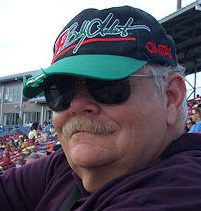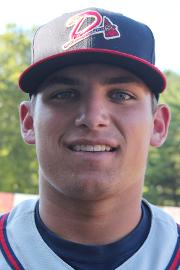Baseball continues to work on ways to open for games in an effort to retain as much of their TV revenue as possible. And before this post gets any further down the paragraph, let’s be clear about something. Do not fool yourselves; this is not about fans, this is not about tradition, this is not about players. This is about TV contracts… and rightfully so. TV revenue is the lifeblood of MLB in the modern era. If we want to see this game we love keep moving forward in the form that we are currently enjoying, we should all want to see the TV money continue flowing in. Every power-plant has a primary engine that makes everything else turn, and with baseball it’s the TV revenue. This season, if there is one, will be made-for-TV. Disclaimer: No fans will be harmed in the making of this season.
So that point accepted, how can baseball get going and get in as many games as possible while still keeping one eye glancing in the periphery toward player health and safety?
The talking suits at MLB are quick to point out that the schemes being considered “are not plans”. In fact, they are adamant that these are simply “ideas” that are constantly evolving. So in that vein, lets lay out the “ideas” as we have come to understand them.
Idea A was to play all the games in Arizona in the 10 Phoenix-area spring training ballparks, plus Chase Field. This would minimize travel, and theoretically exposure for players, since all 11 of those venues are within a 40-minute drive at maximum. But that <strike>plan</strike>, er… *idea* was fraught with many logistical hurdles. How do 30 teams play 15 match-ups in just 11 parks on a revamped schedule that needs to maximize the number of games in a condensed schedule? And how do you house 30 teams in 11 locations that were not designed to include dormitories?
That gave birth to Idea B, which was to split the league onto both coasts and let teams utilize their own spring training facilities in both ARI and FLA, plus the home parks for the D’backs, Rays and Marlins. This would result in defacto Grapefruit and Cactus Leagues for the regular season, with some configuration of league winners and runners up coming together for playoffs late in the year. Since both ARI and FLA have relatively mild fall and winter months, you could actually run games into October and November without game temps resembling Chicago and Denver in March. But as with Idea A, Idea B also has hurdles. Two leagues split into 15 team segments results in an odd team for each that would have to sit out every day on both sides. And the parks in FLA are a little more spread out with most team sites up and down the Gulf coast, with a handful across the state on the Atlantic coast. And of course, there is the infamous FLA weather.
The new idea being floated calls for a 3rd “hub” to be employed, that being in Texas. Yes, the Cactus and Grapefruit Leagues would be joined by the… Longhorn League? Cowboy League? Oil Rig League? But I digress… Back on point, Idea C would split the league into three 10 team divisions that would use Phoenix (ARI), Arlington (TEX) with its surrounding area, and the gulf coast of FLA (plus Miami) as their “hubs”, with the divisions being distributed according to geography, and with some configuration of league winners and runners up coming together for playoffs late in the year. In other words, the 10 eastern-most teams would play in FLA, 10 western-most teams would play in ARI, and the rest would gather in TEX. This scheme would seem the most workable since it would put less of a logistical strain on each hub, would employ 3 even number subsets allowing all teams to have a match-up each day, and also reduce the chances of a single weather system wiping out half the possible games for an entire day or more.
I’ll be honest… for me personally, I realize that any type of season carried out in 2020 will be a strange metamorphosis of the typical season I’m familiar with. It’s simply not going to resemble anything I have come to know as “normal”. So that said, I’m open to and accepting of something that is fresh and entertaining. And I’m open to and accepting of things that are very non-traditional, given the circumstances. Certainly we’ll see a universal DH for this season. Likely, we’ll see creative uses of pitching staffs, including 6-man rotations, “openers”, etc. And since there will be more games played and less off-days, there will likely be expanded rosters with more players getting into the games, including some guys that might have opened the year on a minor league roster in a normal year. This is even more important given that minor league seasons are likely done for the year. All that together will make for a very unique season. And I’ll be perfectly happy with whatever form it takes if it gets the season rolling. The only thing harder to find in 2020 than toilet paper is live sports. I’m paying for Hulu Live for no other reason than live sports. For the last 2 months, that’s been the equivalent of tossing away $50 like an empty bottle of hand sanitizer. I need to get something for my hard earned cash. I’ll even watch live bowling if they’ll get something going. But again, I digress…
So for the Braves, what does this mean?
Well, a quick geographical survey would suggest that the Braves would play in a Grapefruit League that would consist of the Braves, Rays, Marlins, O’s, Nats, Phillies, Bosox, both NY teams, and the Jays. That would be really tough, but would also be really fun.
And our Braves are actually constructed quite well to play under the proposed modified rules. We have our DH in Marcell Ozuna. We have youth, depth and versatility to deal with double-headers and limited off days. We have 7 capable starting pitchers vying for 5 rotation spots, so expanding to 6 is easier than for most. We have the depth in our bullpen to cover 4 innings without hitting the panic button. And we have the talent at the top of our minor league system to fill the additional roster spots without skipping a beat.
Yep, this fan is ready to see 2020 begin to take form. It’s appointment TV.




















 First up is Dustin Allen Peterson, a 22 year old outfielder who was acquired from the San Diego Padres for outfielder Justin Upton. Peterson is currently playing left field for the Rafters. Drafted in the second round (50th overall) by the Fathers, he hales from Gilbert, Arizona, so he gets to visit his parents this fall.
First up is Dustin Allen Peterson, a 22 year old outfielder who was acquired from the San Diego Padres for outfielder Justin Upton. Peterson is currently playing left field for the Rafters. Drafted in the second round (50th overall) by the Fathers, he hales from Gilbert, Arizona, so he gets to visit his parents this fall.



You must be logged in to post a comment.